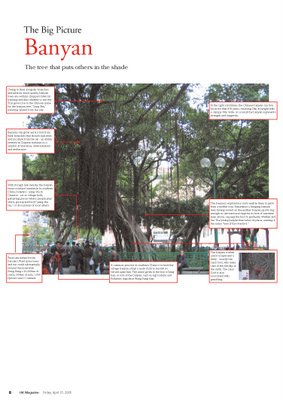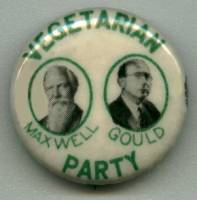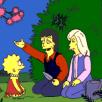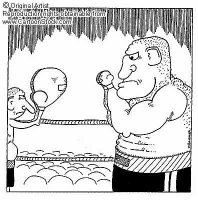Martin, my Danish partner-in-crime, recently brought to my attention a controversy that's been set off by the U.N. (which controversy *isn't* these days?)...or rather, the U.N.'s design team. Can you find anything wrong with this, their poster for International Day for the Elimination of Racial Discrimination (March 21st)?


If your immediate answer is "no", don't worry, you're not alone. I wasn't sure what the problem was, either, and I'm pretty brushed up on my Danish pop culture trivia.
Basically, Danish citizens think this is a very clever, incredibly subtle insult to their country.
Lego originated in Denmark, and along with a few other cultural icons --
Carlsberg,
the Little Mermaid, Hamlet -- the company believes itself to be a very obvious symbol of the small country. In the wake of the Danish cartoon debacle, to use a quintessentially Danish emblem, the 3-dimensional Lego block, in a campaign to identify racism as a "different shape" from the 2-dimensional status quo, is to insult 5 million people with already sensitive skins.
Let's see. My opinion? The U.N. made a mistake. You'd think an organization would have "fact-checked" its props, especially for a widely published poster (multi-lingual, at that). It advertised a day that while largely uncelebrated (I mean, let's face it, shouldn't *every* day be International-Eliminate-Racism-Day?), is still publicized in the global community. SOMEone should have caught the Denmark-Lego connection, at least before the Danish did.

I do not think Lego is a racist company, though their concern with bad PR is understandable. Lego spokespeople made an interesting point, though; the U.N. has worked with Lego on refugee commission posters (pictured left)...why wouldn't they have informed the company in advance that they were printing more literature with the Lego mark on it?
I still find it difficult to believe that someone in the graphic art world was taking a cheap shot at the people of Denmark. What would be the point of putting salt in such an open wound? Danish goods are being boycotted, and its citizens no longer enjoy their peaceful status in the international cast of characters. I can't believe that even the most staunch Muslim supporters within the UN would approve such a public slap in the face. No matter, soon after the posters were released, they were taken down from the website after plenty of complaints, and you'll only find it on a number of blogs and small feature articles in obscure European newspapers now.
There wasn't a ton of press about this -- likely because not many immediately associate Lego with Denmark -- but I think you do have to sympathize, in a way: all of this, because of some EDITORIAL cartoons in a newspaper circulated to no more than 3 million people, in a country that has finally put itself on the world map for something it would much rather have kept under the radar.
A good deal of blogging took place about the topic [no surprise there], a few days ago...I'm a little late, as it turns out:
* In
support of Legos in UN campaigns
*
Outrage [from an American] at the suggestion that this wasn't a pointed attack at the Danes (to get to the right entry, search "Lego" within the webpage
* If you can read Danish, click
here for Politiken's report on Lego's outrage. (Note: Politiken is *not* the newspaper that published the cartoons.)
English Poster graphic taken from politiken.dk.
Arabic poster graphic taken from michellemalkin.com.
 The sun is out, the stockings have come off, lilacs (my favorite!) are bloomin' and it is officially Spring. SPRING! Who in New York isn't smiling today? Tell me that.
The sun is out, the stockings have come off, lilacs (my favorite!) are bloomin' and it is officially Spring. SPRING! Who in New York isn't smiling today? Tell me that.  This also means, I hope, that the weather conditions will be good for my flight this evening to Copenhagen. As a result of my fear of flying (or just taking off, really), I'll take whatever good omens I can get. The thing is, my fear is completely and totally irrational, and goes something like this: I think I've used up my "quota of survival" on flights; and since I did so much traveling over the last few years, every flight I take from now on is like gambling with the jumbo jet gods.
This also means, I hope, that the weather conditions will be good for my flight this evening to Copenhagen. As a result of my fear of flying (or just taking off, really), I'll take whatever good omens I can get. The thing is, my fear is completely and totally irrational, and goes something like this: I think I've used up my "quota of survival" on flights; and since I did so much traveling over the last few years, every flight I take from now on is like gambling with the jumbo jet gods.  After many discussions about this fear, Martin bought me a book put out by Frommer's (the only good guide the place has ever come up with) called Fly Smart, Fly Safe, and before all major takeoffs, I memorize new anxiety-reducing exercises in breathing and muscle tension. Amazingly, one of the suggestions is to wear a rubber band around the palm of your hand and snap it every time you're imagining your fiery death -- a kind of a watered down shock therapy. In case you were wondering, I am not going to do that. It hasn't gotten that desperate yet.
After many discussions about this fear, Martin bought me a book put out by Frommer's (the only good guide the place has ever come up with) called Fly Smart, Fly Safe, and before all major takeoffs, I memorize new anxiety-reducing exercises in breathing and muscle tension. Amazingly, one of the suggestions is to wear a rubber band around the palm of your hand and snap it every time you're imagining your fiery death -- a kind of a watered down shock therapy. In case you were wondering, I am not going to do that. It hasn't gotten that desperate yet.











































